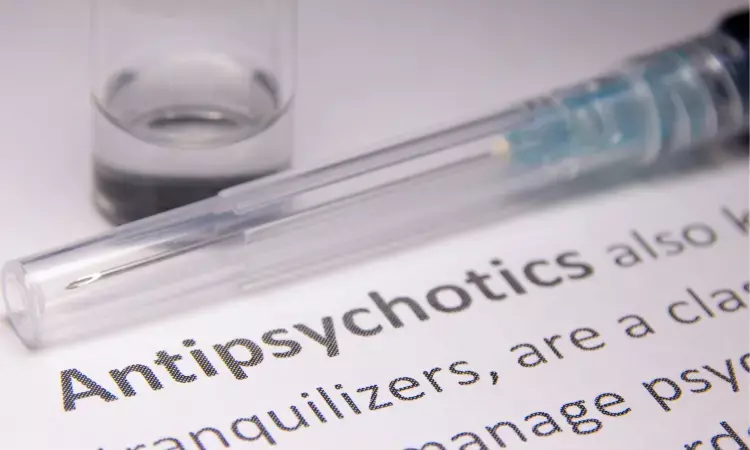- Home
- Medical news & Guidelines
- Anesthesiology
- Cardiology and CTVS
- Critical Care
- Dentistry
- Dermatology
- Diabetes and Endocrinology
- ENT
- Gastroenterology
- Medicine
- Nephrology
- Neurology
- Obstretics-Gynaecology
- Oncology
- Ophthalmology
- Orthopaedics
- Pediatrics-Neonatology
- Psychiatry
- Pulmonology
- Radiology
- Surgery
- Urology
- Laboratory Medicine
- Diet
- Nursing
- Paramedical
- Physiotherapy
- Health news
- Fact Check
- Bone Health Fact Check
- Brain Health Fact Check
- Cancer Related Fact Check
- Child Care Fact Check
- Dental and oral health fact check
- Diabetes and metabolic health fact check
- Diet and Nutrition Fact Check
- Eye and ENT Care Fact Check
- Fitness fact check
- Gut health fact check
- Heart health fact check
- Kidney health fact check
- Medical education fact check
- Men's health fact check
- Respiratory fact check
- Skin and hair care fact check
- Vaccine and Immunization fact check
- Women's health fact check
- AYUSH
- State News
- Andaman and Nicobar Islands
- Andhra Pradesh
- Arunachal Pradesh
- Assam
- Bihar
- Chandigarh
- Chattisgarh
- Dadra and Nagar Haveli
- Daman and Diu
- Delhi
- Goa
- Gujarat
- Haryana
- Himachal Pradesh
- Jammu & Kashmir
- Jharkhand
- Karnataka
- Kerala
- Ladakh
- Lakshadweep
- Madhya Pradesh
- Maharashtra
- Manipur
- Meghalaya
- Mizoram
- Nagaland
- Odisha
- Puducherry
- Punjab
- Rajasthan
- Sikkim
- Tamil Nadu
- Telangana
- Tripura
- Uttar Pradesh
- Uttrakhand
- West Bengal
- Medical Education
- Industry
High doses of antipsychotics may increase mortality among adolescents without diagnosed psychosis: JAMA

Worldwide around 14% to 20% of children and adolescents have a diagnosable mental illness. The FDA has approved the use of antipsychotic medications in some children and adolescents with severe emotional and behavioral disorders. However, dose-related effects of antipsychotic medications may increase mortality in children and young adults.
In a recent cohort published in JAMA Psychiatry of medicaid patients aged 5 to 24 years, antipsychotic treatment was associated with increased risk of death only for patients with doses greater than 100-mg chlorpromazine equivalents. Risk was not significantly associated with lower doses or with either dose in children aged 5 to 17 years.
Researchers conducted a US national retrospective cohort study of Medicaid patients with no severe somatic illness or schizophrenia or related psychoses who initiated study medication treatment. Study data were analyzed from November 2022 to September 2023. Current use of second-generation antipsychotic agents in daily doses of less than or equal to 100-mg chlorpromazine equivalents or greater than 100-mg chlorpromazine equivalents vs that for control medications (α agonists, atomoxetine, antidepressants, and mood stabilizers). Total mortality, classified by underlying cause of death. Rate differences (RDs) and hazard ratios (HRs) adjusted for potential confounders with propensity score–based overlap weights.
The key findings of the study are
• A total of 2 067 507 patients beginning study medication treatment filled 21 749 825 prescriptions during follow-up with 5 415 054 for antipsychotic doses of 100 mg or less, 2 813 796 for doses greater than 100 mg, and 13 520 975 for control medications.
• Mortality was not associated with antipsychotic doses of 100 mg or less (RD, 3.3) but was associated with doses greater than 100 mg (RD, 22.4).
• For higher doses, antipsychotic treatment was significantly associated with overdose deaths (RD, 8.3) and other unintentional injury deaths (RD, 12.3) but was not associated with nonoverdose suicide deaths or cardiovascular/metabolic deaths.
• Mortality for children aged 5 to 17 years was not significantly associated with either antipsychotic dose, whereas young adults aged 18 to 24 years had increased risk for doses greater than 100 mg (RD, 127.5).
Researchers concluded that “In this cohort study of more than 2 million children and young adults without severe somatic disease or diagnosed psychosis, antipsychotic treatment in doses of 100 mg or less of chlorpromazine equivalents or in children aged 5 to 17 years was not associated with increased risk of death. For doses greater than 100 mg, young adults aged 18 to 24 years had significantly increased risk of death, with 127.5 additional deaths per 100 000 person-years.”
Reference: Ray WA, Fuchs DC, Olfson M, et al. Antipsychotic Medications and Mortality in Children and Young Adults. JAMA Psychiatry. Published online November 29, 2023. doi:10.1001/jamapsychiatry.2023.4573.
MSc. Neuroscience
Niveditha Subramani a MSc. Neuroscience (Faculty of Medicine) graduate from University of Madras, Chennai. Ambitious in Neuro research having worked in motor diseases and neuron apoptosis is interested in more of new upcoming research and their advancement in field of medicine. She has an engrossed skill towards writing and her roles at Medical dialogue include Sr. Content writer. Her news covers new discoveries and updates in field of medicine. She can be reached at editorial@medicaldialogues.in
Dr Kamal Kant Kohli-MBBS, DTCD- a chest specialist with more than 30 years of practice and a flair for writing clinical articles, Dr Kamal Kant Kohli joined Medical Dialogues as a Chief Editor of Medical News. Besides writing articles, as an editor, he proofreads and verifies all the medical content published on Medical Dialogues including those coming from journals, studies,medical conferences,guidelines etc. Email: drkohli@medicaldialogues.in. Contact no. 011-43720751


